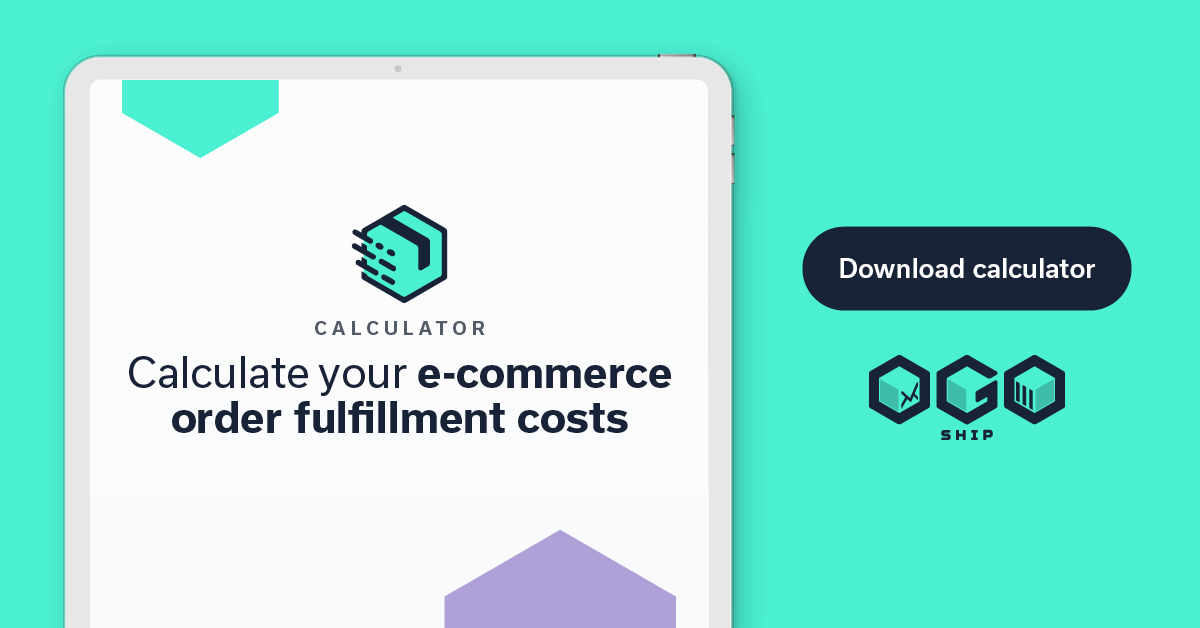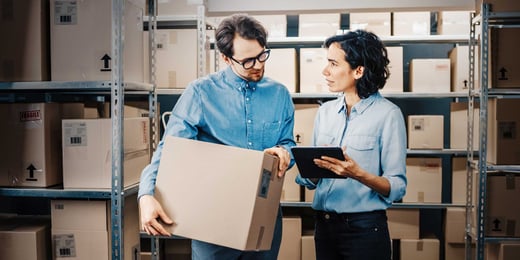There are many terms and acronyms you need to know for e-commerce order fulfillment. So, what’s the best place to get up to speed with all these definitions?
Look no further than this glossary, which includes the most common terms from A to Z!
1. Application Programming Interface (API)
The application programming interface, also known as API, is the programmed instructions that allow various software applications to interact. For example, our Order Management System myOGO uses an API to connect to the various e-commerce platforms. Check out the available connections.
2. BOPIS
BOPIS stands for buy online, pick-up in store. This option has become popular for e-commerce brands since it allows retailers to blend their in-store and virtual experiences.
When it comes to order fulfillment, the process can be completed in two different ways:
If the product is in stock at the local store, an employee can use the app to locate it and hold it for the customer. Once it’s ready, the customer will be notified and they can pick it up.
If the order is not currently in stock, the goods must be ordered from a warehouse or another store nearby. After it arrives the customer will receive a notification so that they can come to collect it from the store.
3. BOPAC
BOPAC is an acronym for buy online, pick-up at curbside. With this feature, shoppers can place an order online and drive up to the curbside for delivery. They don’t even have to enter the store!
The logistics setup here is a bit more complex because you need to organise a pickup location, communicate the appropriate time windows, and direct traffic accordingly.
4. Bundling
Bundling refers to the process of combining several products or services into one convenient package. These bundles are typically offered at a lower price than what they would otherwise pay to purchase the items separately.
5. Cargo
The term cargo refers to the goods that are being transported. The cargo may be shipped via airplane, ship, railcar, or vehicle.
6. Commercial Invoice
A commercial invoice is a document that provides details about the products being shipped, such as quantity, price, and descriptions. It will also include the seller’s contact information and payment terms.
7. Distribution Center (DC)
A distribution center, or DC, refers to a warehouse that maintains your inventory before it is transferred to your stores. The goal is to provide a convenient way to redistribute your products, and in some cases can be used to change order transportation modes.
8. Distribution Channel
Distribution channels are the companies and individuals that participate in the delivery of goods. It includes all the intermediaries that your goods and services will pass through until they reach the final consumer.
9. Dropshipping
Dropshipping is a type of order fulfillment method where your business does not keep products in stock. Instead, when a customer places an order, the retailer will purchase it from a third party. This third-party manufacturer, retailer, or wholesaler will ship the goods directly to the consumer, so the seller never maintains possession of the inventory.
10. EORI number
EORI means Economic Operators Registration and Identification number. It is a European Union registration and identification number for businesses who do import or export of goods into or out of the EU. Businesses and people wishing to trade must use the EORI number as an identification number in all customs procedures.
11. Expediting
Expediting involves shipping goods faster than normal. Generally, a customer is responsible for paying to cost of expedited shipping.
12. Export
The term export means that you are shipping goods to another country. This is common for e-commerce brands since they can sell to customers anywhere in the world.
13. Inbound Logistics
Inbound logistics involves receiving products or raw materials from your suppliers. It consists of a network of people and businesses that work together to bring goods into your business so that you can build up your inventory.
14. Inventory
Inventory refers to all the raw materials, parts, and finished goods a company maintains to sell in the future.
15. IOSS
IOSS stands for the Import One Stop Shop (IOSS) Scheme. The IOSS is an online portal, that has been created for online businesses so that they can report distance sales of imported goods with a value below €150. Read more on IOSS.
16. Last-Mile Delivery
Last-mile delivery refers to the final leg of the order's journey. It is the most critical part of the delivery process since it gets the order to its final destination – so supply chains must work to make it quick and efficient.
17. Logistics
Logistics is the processes a company relies on to obtain inventory, process it, and deliver it to its end consumer. It includes everything from warehousing to order fulfillment and delivery.
18. Net Weight
Net weight refers to how much an order weighs before considering the container or packaging required.
19. Pick and Pack
Pick and pack is a system used to identify a customer's order and place the items into a box for shipping. E-commerce brands use this system to process small orders quickly.
20. Proforma Invoice
A proforma invoice is a preliminary bill or estimated invoice which is used to request payment from the committed buyer for goods or services before they are supplied. A proforma invoice includes a description of the goods, the total payable amount and other details about the transaction.
21. Omnichannel
Omnichannel refers to a sales approach that provides a seamless customer experience – regardless of where someone shops. That means that their website, mobile app, and in-store experience all interact so that customers can easily switch between channels.
22. Order fulfillment
E-commerce order fulfillment stands for storing inventory, picking the right products, packing them, and shipping the orders to customers. E-commerce order fulfillment can be done in-house by the e-commerce company itself or as an outsourced process by a third-party service provider (3PL for short) – that's what companies like us do. Read more about order fulfillment.
23. Order Management System
An order management system, or OMS, is the technology that allows your firm to track orders, sales, inventory, and fulfillment. It will cover every aspect of e-commerce, including customers, sales channels, product information, and more. Read more on Order Management Systems and our OMS, myOGO.
24. OSS
OSS stands for One-Stop-Shop. The OSS is an online portal that is used to help businesses comply with their VAT requirements. It has been available to e-commerce brands within the EU since July 2021. Read more about OSS.
25. Outbound Logistics
Outbound logistics is a term that encompasses the entire order fulfillment process. For example, picking, packing, shipping, and package delivery are part of the outbound logistics needed to get an order from your company to the end consumer.
26. Reverse Logistics
Reverse logistics is the process used to handle return orders. Instead of your standard flow, reverse logistics work in the opposite direction of your supply chain: the products move from the end consumer back to the seller.
27. SKU
SKU is a popular acronym in order fulfillment that stands for a stock-keeping unit. An SKU is a barcode that can be scanned by vendors to help track inventory movements. They are also used to distinguish one product from another.
28. Supply Chain
Your supply chain is the network of suppliers and manufacturers that allow you to make distribute your products. A supply chain can include a wide variety of people, organisations, and activities and requires information to be shared to be efficiently sourced or produced.
29. Third-Party Logistics (3PL)
When a company outsources its supply chain management and 3PL ecommerce fulfillment services, it is called third-party logistics – or 3PL. The 3PL organisation will take care of everything from warehousing and inventory management to order distribution.
30. VAT
VAT stands for value-added tax. It is a tax levied on goods and services based on the price at each stage of production, distribution, and final sale. It is assessed incrementally, so a portion of the tax will be levied at each stage.
Tags:
3PL


Comments